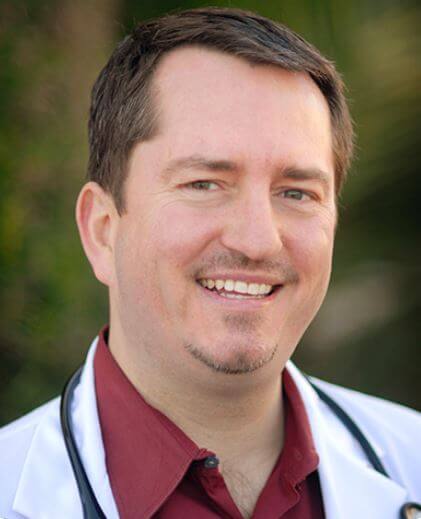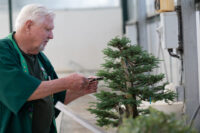Each week on her KSVY radio show, Saturdays at noon, Cat Smith puts questions to a local authority that were submitted by curious Sonoma Valley kids. Here, Dr. Jerome Smith, a pediatrician in Sonoma Valley for 14 years, answers.
Owen, age 11 asked, How was COVID-19 made?
Dr. Smith: “That is a great place to start. Well, let’s back up one step. Let’s talk about, ‘what are gems?’ ‘Germs’ is kind of a word that we throw around. Germs can be viruses. Germs can be anything from bacteria or fungus to parasites, like molds.
And viruses are different than those other groups because they’re not fully living cells. They can’t multiply, reproduce, and go on hijacking another organism’s cells like ours on their own, so they have this oily coat – that by the way, both soap and alcohol can destroy – and they try to get into your body to multiply. They sort of live off of your machinery, your cells’ ability to reproduce, to keep living.
The coronavirus family that we’re going to talk about gets its name from its shape. Under a very powerful microscope, it looks like little spikes are coming out from a crown, like an ancient medieval crown. And some of you know that ‘Corona’ means ‘crown’ in Spanish and of course, in Latin, where a lot of medical words come from.
The four most popular Coronaviruses that we know about are some of the very viruses that cause the common cold. There are other viruses that also cause colds, but this family is notorious. There are also other Coronaviruses that have caused smaller, more dangerous outbreaks that you hear about once in a while, like what we’re having now. But this one, we think, most likely started out because of its genetic code – kind of its recipe. We think that it most likely started out as a bat virus that usually doesn’t infect humans, but it got passed through to another animal, and then it changed (or ‘mutated’), and then suddenly could infect humans.
This one’s a very close relative of the SARS virus that happened a few years ago, so it’s called SARS CoV-2 (i.e., SARS, Corona Virus number two) because it’s the second one. And the disease that we get from it is called COVID-19, because it was first noticed at the very end of last year (of 2019), in China. And it changed from something else that had already been rolling around. But it wasn’t until it infected us that people noticed.”
Aaron, age 10; Jack and Stella, both age 11, asked, How does it spread so quickly? Why is it so contagious?
“Also, a great question. So, this virus now spreads person-to-person. And so, some viruses, as you all may know, can infect your stomach and intestines and make you feel queasy. Because of that, you’d have vomiting and diarrhea and that’s how they exit their host and spread to other people. Others like colds and flu leave your body – if you’re their host – when you cough or you sneeze, and then they get breathed into someone else’s mouth or nose from someone nearby, or maybe picked up on your hands when they land on nearby surfaces. So then, when that hand touches your eyes or nose or mouth, it has found a new home.
COVID seems mostly to work like that. And viruses are very, very tiny. So the way the virus transmits kind of helps us to figure out how to stop it. So you’ll hear words thrown around, if you’re sort of reading about COVID, about ‘airborne,’ and ‘droplet’ transmission. Airborne basically means they’re so, so tiny, that they kind of float around for a little while. And droplet means they’re heavier, so even though we can’t see them, they’re heavier than the little ones. So, with gravity, they kind of drop down and land on stuff like surfaces. So this is a very important distinction that scientists sometimes make because it tells us how best we can protect ourselves and protect our families.”
Jacqueline asked, Do masks really help? And Jordan asked, Why do we only cover our face?
So, let’s talk about prevention. Masks cover your nose and mouth. As you remember, we talked about how the germs come out of your mouth and nose when you cough or sneeze, so it limits those germs landing on other people. The mask also covers your nose and mouth to remind you not to touch your face with your possibly infected hands. If you have the germs on your hands when you accidentally touch your face, but you’re wearing a mask, they would hit the mask first. Now your eyes don’t sneeze or cough, as you know, but we also recommend hand washing to keep your hands from contaminating your eyes because viruses can – theoretically at least – come in through your eyes. So, don’t touch your face in general and that will prevent all three places of transmission (the mouth, the nose, and the eyes) from getting infected.
In addition, you’ve heard a lot about physical or social distancing, keeping distance from others who are possibly infected so that those droplets that we talked about would fall before you breathe them in.
Another way to prevent infection is to have antibodies after you’re infected. So, what is that? Antibodies are little fighter cells that your body makes after being infected, and they kind of linger in your body as a memory, so they can be ready to fight the thing off the next time.
Finally, for many diseases, you can trick your body into making antibodies by getting a vaccine instead of getting sick. So those are all sorts of ways that we can prevent getting the virus. We only cover our face, of course, because the virus doesn’t seem to really pass through your skin cells or through your pores, thankfully.”
Porter, age 10; Kevin and Alexander, age 11, all asked similar questions to: When will we have that vaccine that you were just talking about?
“Also a great question. Having a vaccine, I think, is going to be very important to stop the spread of disease. And scientists all over the world are working very hard on that right now, it’s obviously a very important thing. But I think it’ll be months to maybe a few years, hopefully not so long, hopefully within a year, but I don’t see it happening right away. It takes a long time, sometimes decades, to develop vaccines to things. Because first, you have to make sure it’s safe, then to make sure it’s effective, and then that it actually works in most people, and that its effect lasts a long time. And also, that it doesn’t create other bad things (‘side effects’) that would make it dangerous for some people. And it takes a while before they can decide that, ‘yes, we can let this vaccine be given to thousands and millions of people.’”
Josie, age 11 asked, What are the symptoms of COVID-19 and why is it here right now?
“Great question. What we have found as these months have gone by is that people can have a lot of different kinds of symptoms. Most people, though, have some combination of fever, cough and/or trouble breathing. But as we said, some people don’t have any symptoms.
Sometimes you can have other symptoms similar to things you get with other viruses, like headaches or muscle aches, sore throat, and rarely, tummy pain, diarrhea, or runny nose. This virus is interesting, in that a few people have reported loss of ability to smell or taste, which, in combination with some of the other symptoms might make your doctor a little more suspicious for COVID-19.
As to why it’s here just now: viruses are around and changing and mutating all the time and it’s just sort of bad luck, random event that it has mushroomed into this big worldwide thing that we’re now trying to get control of.”
Sonoma Kids Ask the Experts with Cat Smith airs every Saturday at noon on 91.3 FM KSVY Sonoma. The video replays can be found by visiting YouTube and searching #SonomaKidsAsk. Questions and suggestions for future experts can be sent to [email protected]






Be First to Comment